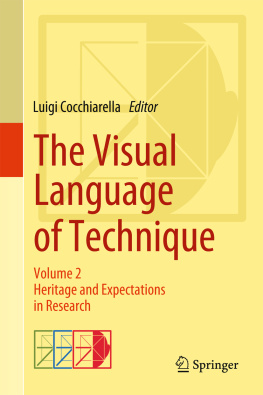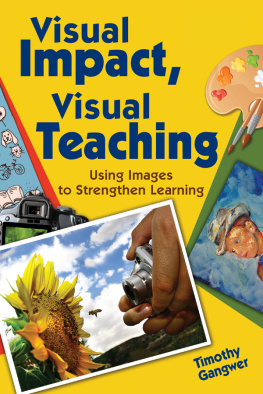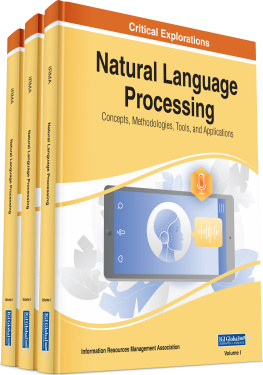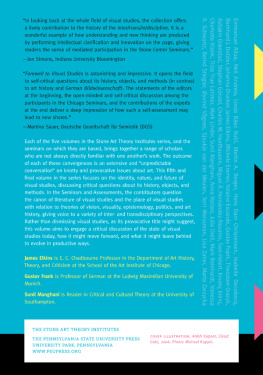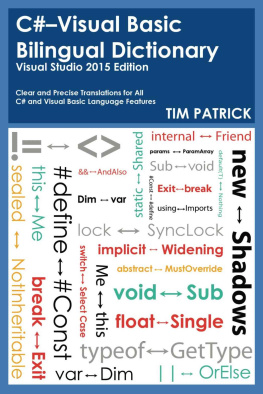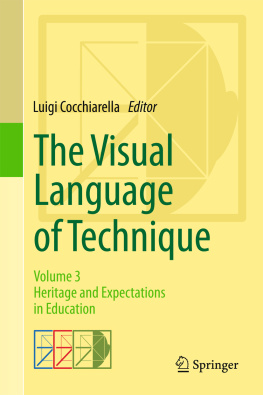Part I
Setting the Matter
Springer International Publishing Switzerland 2015
Luigi Cocchiarella (ed.) The Visual Language of Technique 10.1007/978-3-319-05341-7_1
Working with the Image: Description Processing Prediction
Luigi Cocchiarella 1
(1)
Department of Architecture and Urban Studies, Politecnico di Milano, Milan, Italy
So often a picture is better than a thousand words. That is what the cosmologist John David Barrow points out in his book Cosmic Imagery , devoted to the key images of the History of Science, a statement already suggested by Leonardo Da Vinci more than 500 years ago. Barrow also states that Visual Language is the most natural one, while others can be considered postscripts to the human story . As proof, we can take the ancient rhetoricians, who adopted the method of loci (literally places ), a mnemonic technique consisting of ideally connecting memories to some experienced or imaginary places, so that memories reappear once those places are mentally retraced.
Why?
The neurobiologist Lamberto Maffei explains that, doing so, they unknowingly moved mental records from semantic memory , more demanding for the cerebral cortex, to the procedural memory , more related to the oldest part of the brain, easier to retrieve, more visual, longer lasting and more stable. Nowadays, we also know that more than 50 % of the neurons are involved in the visual processes. In other words, human beings could be undoubtedly characterized as visual animals . It is not a coincidence that the early human representations consist of images based on visual analogy , and later on other special and abstract visual strategies, based on visual symbolisms (alphabets, numbers, musical and mathematical notations) or on a mix of the two (see the hieroghlyphs, the hypertexts, and so forth) have been achieved.
Given the interconnection between language and thought, we know that, since the process of thinking affects the Visual Language, Visual Language reciprocally affects the process of thinking. Our culture is developed exactly on these visual bases.
In the Western tradition, after the troubles due to the decline of the Roman Empire, in 787 AD, the Second Council of Nicea finally reintroduced the use of the sacred icons, allowing the image to represent freely both the visible and the invisible , reality and imagination, with significant consequences on our cultural identity. Until today, in many fields we recognize a double function of the image, namely the descriptive and the predictive function. Both of them are operational functions, as the image, at the same time, is a working and thinking tool, enabling us to process ideas , either through mental, perceptual or graphic visualizations.
As a matter of fact, the visual is still implicit in the words we use to indicate predictions in Science, Art, Technique, respectively discovery , invention , prevision , and especially modern researches widely rely on imaging practices that are constantly increasing in our digital era. Nevertheless, quite often we omit to take care of the image , maybe because it is really easily perceivable, then we tend to take it for granted. This is why, in conclusion, we would remind how important Visual Language was considered in ancient Greece, where the noun Theoria , which originated the word theory , came from the verb Theoreo , that is, to see , to observe , to examine . This verb not only echoed, as Martin Heidegger has acutely noticed, the words Theos and Thea , namely god and goddess , but also shared its root with the term Aletheia , which is the truth , if we prefer, verity . Which is, or at least should be, in spite of our attention, our memory or present consciousness, matter for research .
Springer International Publishing Switzerland 2015
Luigi Cocchiarella (ed.) The Visual Language of Technique 10.1007/978-3-319-05341-7_2
Colloquium with the Editorial Staff of the Science Magazine FOCUS
Luigi Cocchiarella 1
(1)
Department of Architecture and Urban Studies, Politecnico di Milano, Milan, Italy
Abstract
The science magazine FOCUS edited by Gruner+Jahr/Mondadori S.p.A. is a well-known review dealing with scientific information, covering a wide range of research fields. For the editorial staff it is a common routine to work with scientific images, visual information, art and technique and the abundance of the published illustrations in the articles can prove that. The interview has been video recorded on June 5, 2013 at the FOCUS editorial offices in Milan, with some representative members of the editorial staff: Francesca Folda (Editor-in-Chief), Vito Tartamella (Managing Editor), Alessandra Cristiani and Danela Scib (Photo Editors). According to the purposes of the seminar, the focus was on the role of visual language in research. Here we show a transcript concerning some issues in that conversation.
Interviewed by Luigi Cocchiarella.
Video recording by Politecnico di Milano. Translated in English at the Politecnico di Milano.
Video interview available at: https://www.youtube.com/watch?v=dTcRD9wMoug
LC : Good morning, today we are guests in the editorial offices of the science magazine Focus to discuss on the role of the picture in the science research and disclosure. I would like to start with a first question as we have several topics on the table. I would like to recall the opinion of John Barrow, a quite well known cosmologist, who stated: a picture is worth one thousand words. Leonardo Da Vinci has already expressed this opinion at least 500 years ago, and it seems to be a belief running through the entire history of our knowledge. Do you think that this statement is valid only in the technical - scientific field or that a picture can be worth one thousand words also in the literary - artistic field? Based on your experience and since your magazine deals with many disciplinary contexts, what is your opinion on this argument?
FF : Undoubtedly, the value of the picture is always vast, growing in the contemporary era, and in all fields there may be a picture able to express much more than individual words. Obviously, with words you can enter into technical details, in a matter of disclosure and explanation that may be broader. The picture can be more immediate. Obviously, it depends on the context we are in.
LC : The picture has the advantage of being immediately perceivable; we see it instantly. However, this is not valid for every picture we encounter. Sometimes, we need to have some knowledge on the argument featured by the picture to be able to understand it. Do you think that it is possible to explain a picture through other pictures? That is, by placing next to it pictures that explain it, by making it explicit in particular aspects, or by graphically adjusting and retouching original images. Is this a practice you commonly use to explain very difficult pictures?
VT : Well, actually not. If we choose a picture, it is because somehow, as you said in your previous question, it expresses more than a text, and this is usually true. If a picture is tough to read, we adopt a technique, not invented by us, which is quite common in science journalism, previously used even in Leonardos drawings. We combine texts with little arrows, little needles, which explain the single details with words. On the contrary, there is a related combination, therefore between picture and text. They are one inside the other and explain each other with cross-references that are immediately perceived. This is how we get out of this hypothetical impasse; if there is a difficult picture that is not immediately perceivable, we tend not to choose it. Instead, we favor pictures that strike the attention, seduce, fascinate, captivate, and are somehow instantly comprehensible. If that is not the casebecause actually no argument is already known by our readers unless perhaps as a base smatteringthen this trick of linking the explanatory text directly to the most difficult pictures element, is the tool we use to make the various details, as well as the overall argument understandable. There may also be a small text, a little general explanatory box that frames the argument in its generality, so the single detail is illustrated by the single text element showing it. Maybe we can come back to this issue later on.

